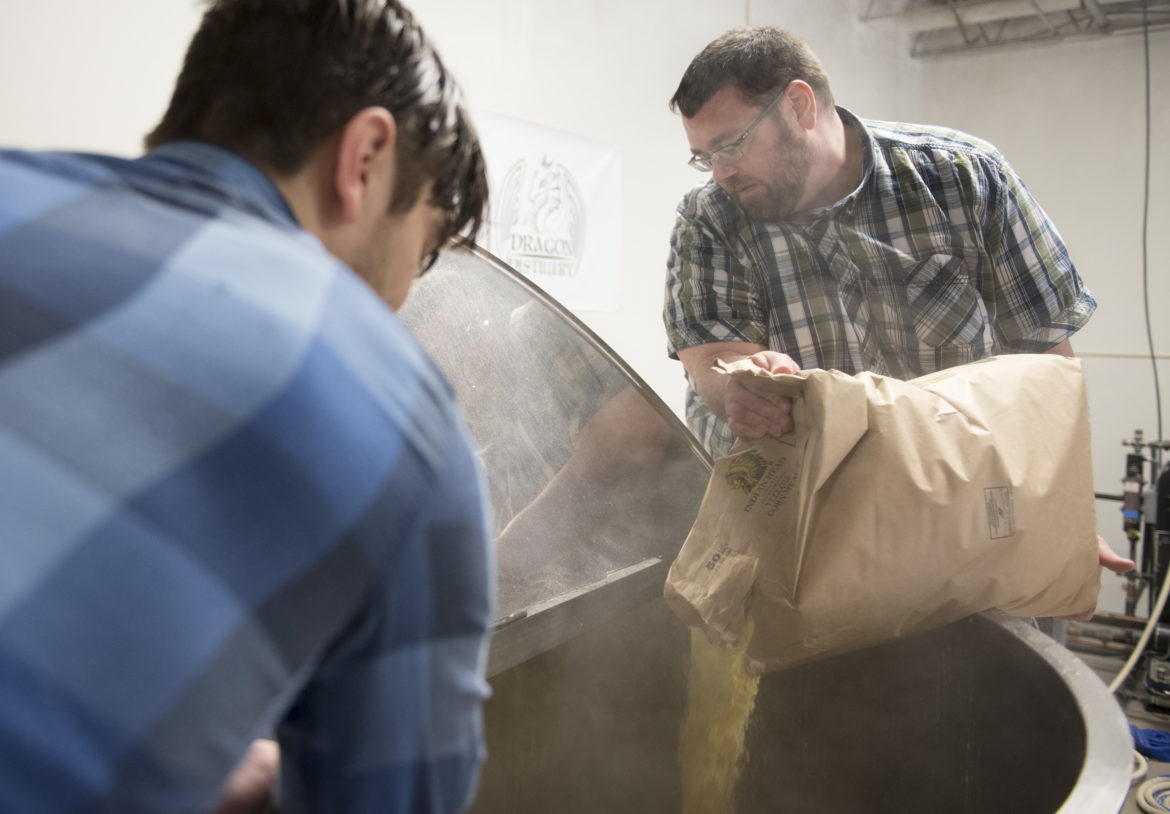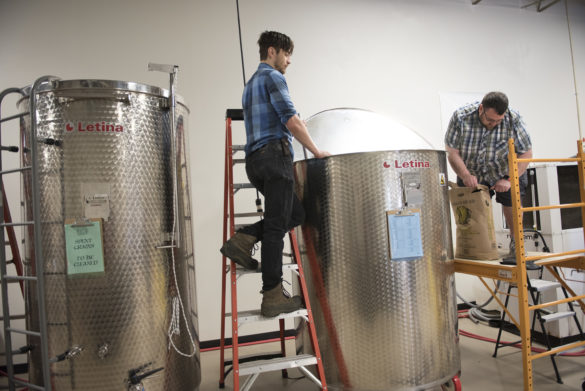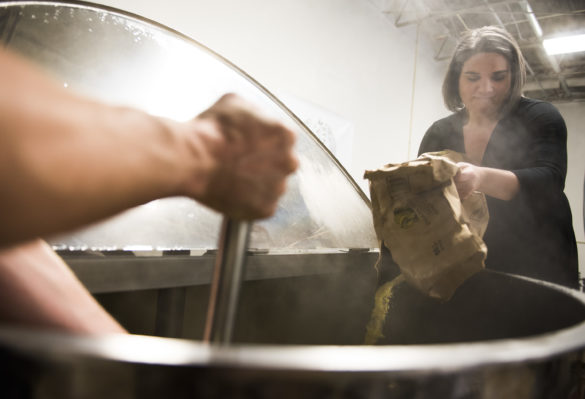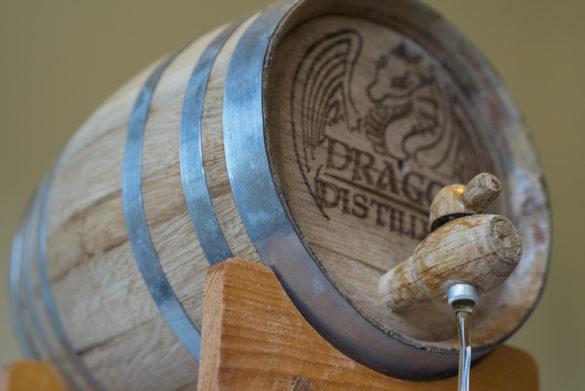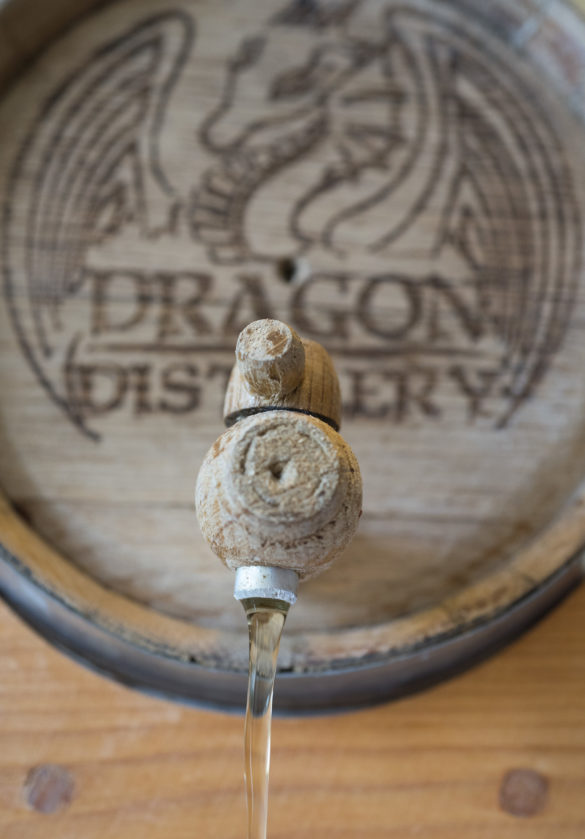I have never been a fan of spirits. For the past 10 years, my alcohol consumption has consisted almost entirely of craft beer, so how did I find myself taking a bourbon making class?
Last November, I started the Uncapped podcast, which focuses on craft beer, and after a few episodes, I received an email from Dragon Distillery owner Mark Lambert, asking if I would consider featuring distilleries on my podcast. I told him flat out, “I don’t like spirits,” and I thought I’d be doing his distillery a disservice by featuring it on Uncapped.
But a few months later, the FNP announced hosting Frederick’s first craft spirits festival, and inviting local distilleries on Uncapped seemed like a good way to promote the festival. I figured it would be funny showing my adverse reactions to the spirits, and as long as my co-host was someone who would appreciate them, together we could make a great show. I contacted Mark saying I had changed my mind and would love to do an episode featuring distilleries.
Turns out, I actually like high-quality craft spirits.
While interviewing Mark, he talked about the bourbon making class, and I was instantly intrigued.
Fast forward to today (post-bourbon-making class), and here I am, a fan of craft spirits and an “experienced” bourbon maker.
LEARNING THE HOW-TO
I had no idea what to expect going into the class. I’m familiar with the process of brewing beer, but my knowledge of distilling spirits was limited to watching a few episodes of “Moonshiners” on the Discovery Channel. It quickly became apparent that the process was way more complicated than I thought (or that Popcorn Sutton made it seem).
Dragon’s course, held at the distillery in Frederick, consists of a nice mixture of lecture time and hands-on experience.
Our class kicked off with starting a mash (I’ll get back to that later), and then we went straight into a lecture, when Mark taught us the history and legal definition of the drink.
To be considered bourbon, a spirit must meet six criteria:
1. Made in the U.S.
2. 51 percent or more corn
3. Aged in new charred oak barrels
4. Distilled at 160 proof or less
5. Barreled at 125 proof or less
6. Bottled at 80 proof or more
Once we knew the definition of bourbon, it was time to get our hands dirty and learn how to make some.
STEP BY STEP
The first two steps of making spirits are the same as brewing beer: mashing (when the grains are cooked to break down the starch into sugar) and fermenting the resulting liquid (wort) to create alcohol.
After fermentation is complete the process starts to get very different from beer production, and quite complicated. The next step is distillation, or is the process of separating various compounds in a liquid mixture based on evaporation and condensation. This works due to water and various types of alcohol having different boiling points. By adjusting the temperature, you can control what the still is producing. The still at Dragon is an impressive work of art and according to Mark the largest operating craft still in Maryland.
Next up is filtering and proofing. Just like all of the water used during the entire process, the spirits are passed through a filter, then mixed with water to bring it to the proof level that is desired.
The last step is aging, when the spirit is placed in a barrel. During that time, flavor characteristics of the barrel are imparted on the spirit. Due to fermentation lasting anywhere from three to nine days, we added three bottles of Dragon’s “Bad” Bill Tutt Moonshine (un-aged corn whiskey) that was already finished into a 3-liter oak barrel. Mark named their Moonshine, which is made from an old family recipe, after his great grandfather Bill Tutt. Tutt was known to be a moonshiner. As an added benefit, the barrel can be reused to age whiskey or even beer once the bourbon has been removed.
THE AFTERMATH
As the class came to a close, it became clear to me that not only did I open up my mind and palate to craft spirits, but I also came to understand the stories behind what fuels Mark’s passion to produce creative products. As Mark indicated early on, his interest and investment in the business begins with his family heritage and links to moonshine, just as our bourbon, too, begins with moonshine.
So how did it taste?
After aging in our barrel for about eight weeks, we removed our bourbon from the barrel to see how it turned out. It was absolutely delicious, and even at 100 proof, extremely smooth. I wish I could give you a better description; my vocabulary for describing spirits is limited to grunting good or bad.

